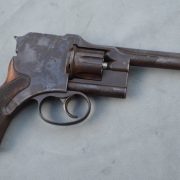This week’s Wheelgun Wednesday has us looking at an ungainly, unconventional late 19th century Romanian-designed and partially British produced revolver: The Gatling Dimancea.
More Revolver Articles @ TFB:
- Wheelgun Wednesday: Colt 1851 Navy Revolver Attributed to Wild Bill Hickok
- What is the Best Cheap .38 Special Revolver?
- Wheelgun Wednesday: German Weihrauch Revolvers
- The Rimfire Report: Ruger Wrangler Birdshead .22LR Revolver
- Wheelgun Wednesday: An American Automatic Revolver
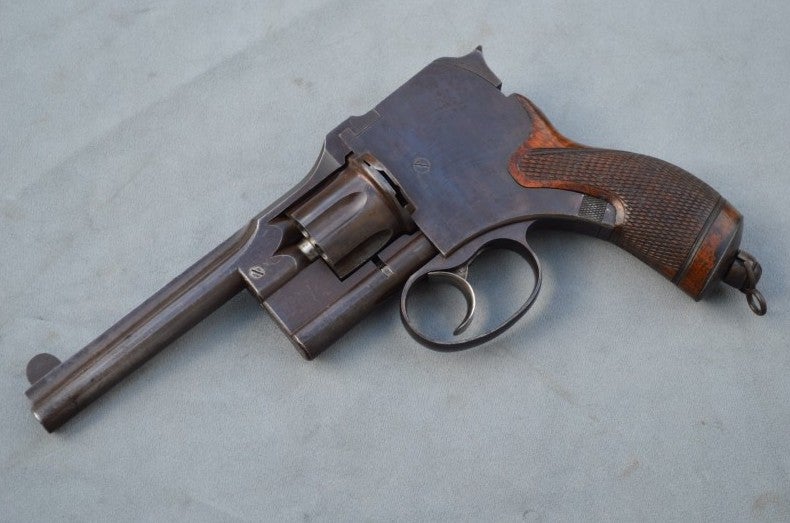
Gatling Dimancea. All Photos Credit: Galerie De Mars
The Dimancea was designed and patented in 1885 by Haralamb Dimancea, a Romanian Army officer. First prototypes were produced by Kynoch, and then small-scale production (roughly one thousand pieces) was done by the “Gatling Arms & Ammunition Co.” This was a British company based in Birmingham that was previously formed to produce copies of the Gatling gun for European sales.
Function and Design
The Dimancea is a rather bulky six-shot .38 caliber revolver, and has some very unique design aspects. First and foremost, it is “hammerless”. The revolver fires via an internal sprocket actuated by the trigger that both turns the cylinder via one set of arms and cocks/releases an internal striker with the other.
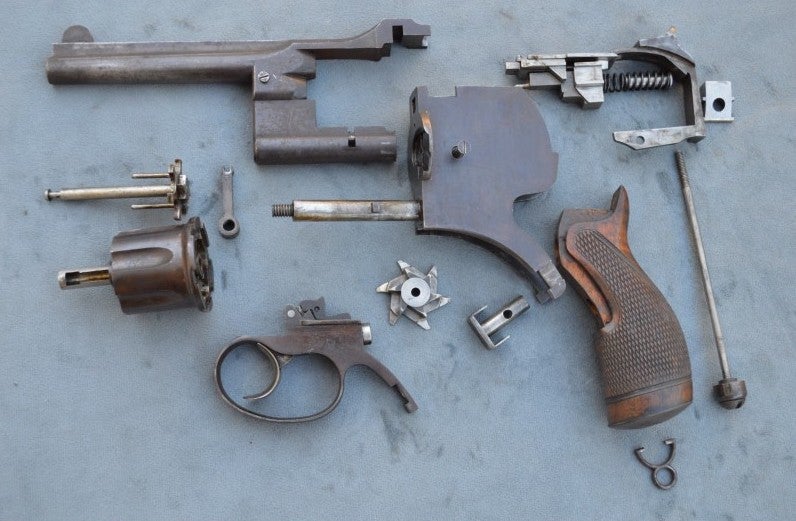
Gatling Dimancea. All Photos Credit: Galerie De Mars
What looks like a shrouded hammer on the rear of the frame is actually a release latch to twist the cylinder and barrel portion 90 degrees to the left. One would then pull the barrel portion forward to eject the cartridge cases and reload.
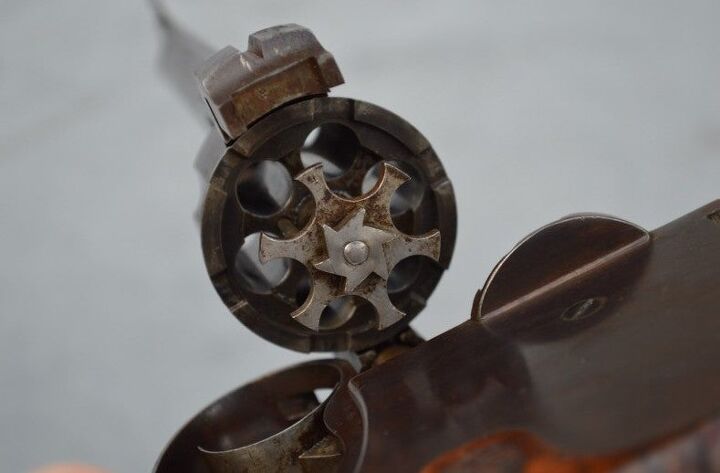
Gatling Dimancea. All Photos Credit: Galerie De Mars
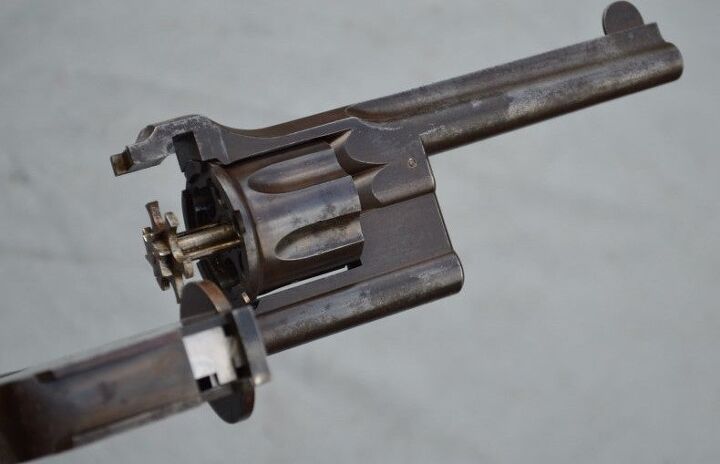
Gatling Dimancea. All Photos Credit: Galerie De Mars
The trigger and sear group is a removable unit, much like on some more modern rifles and shotguns. The sear has a dual function as the cylinder indexing stop when the trigger is fully pulled to the rear.
If that sounds confusing at all, that’s because it is! It’s a very unique, though perhaps overly complex design concept, for a revolver. To get a better visualization of it, one can see a full disassembly at Ian McCollum’s Forgotten Weapons channel.
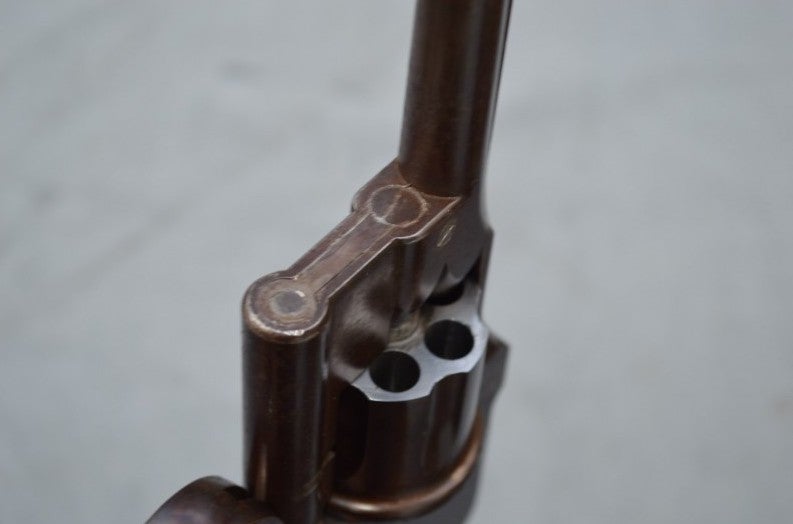
Gatling Dimancea. All Photos Credit: Galerie De Mars
Short-Lived and Unsuccessful
The Dimancea revolver was intended for Romanian Army trails, and was also looked at by the French Army, but neither chose to adopt this strange revolver. Production ceased in 1890 when the Gatling Arms and Ammunition Co. ceased operations due to debts.
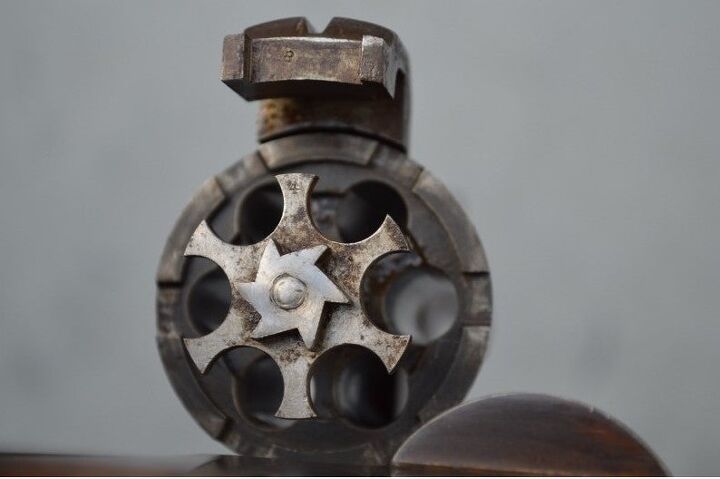
Gatling Dimancea. All Photos Credit: Galerie De Mars
Grenfell and Accles, the new company formed to acquire the production facilities, chose to no longer manufacture this sprocket-powered revolving oddity, likely due to its manufacturing complexity, and instead chose to only produce ammunition and improved versions of the Gatling Gun.
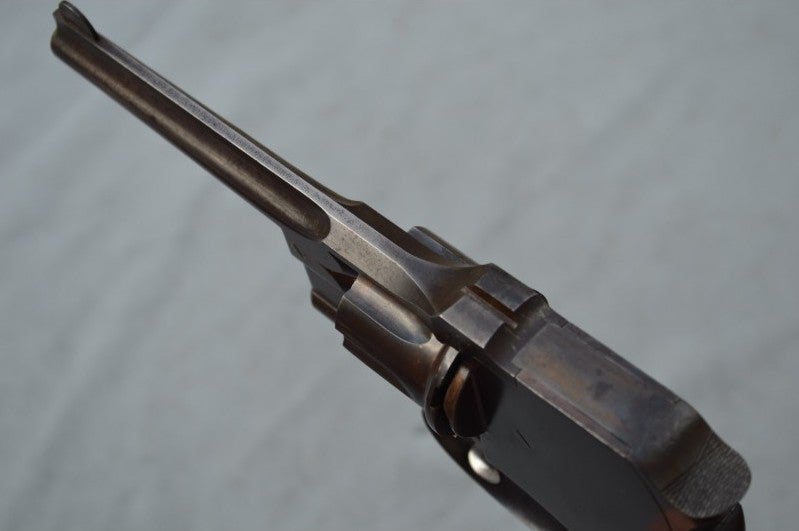
All Photos Credit: Galerie De Mars


